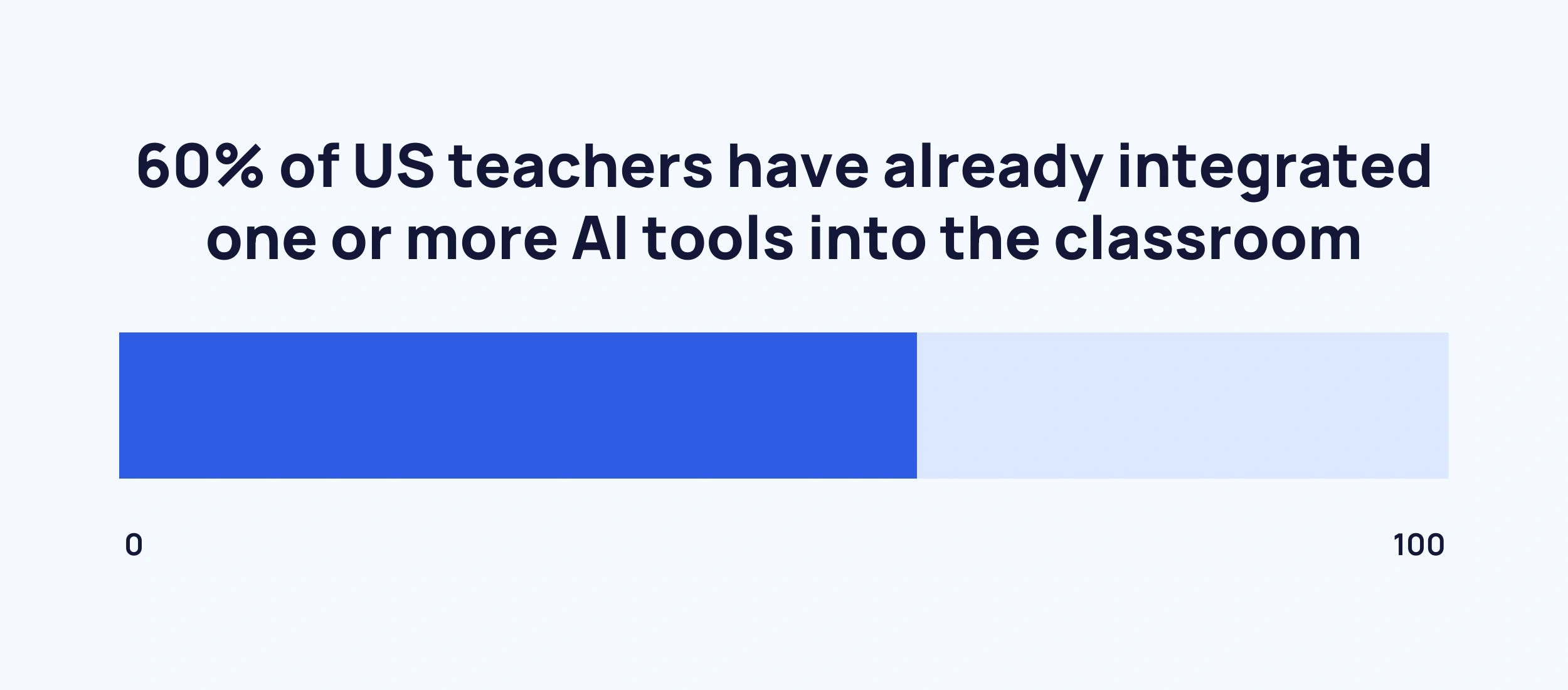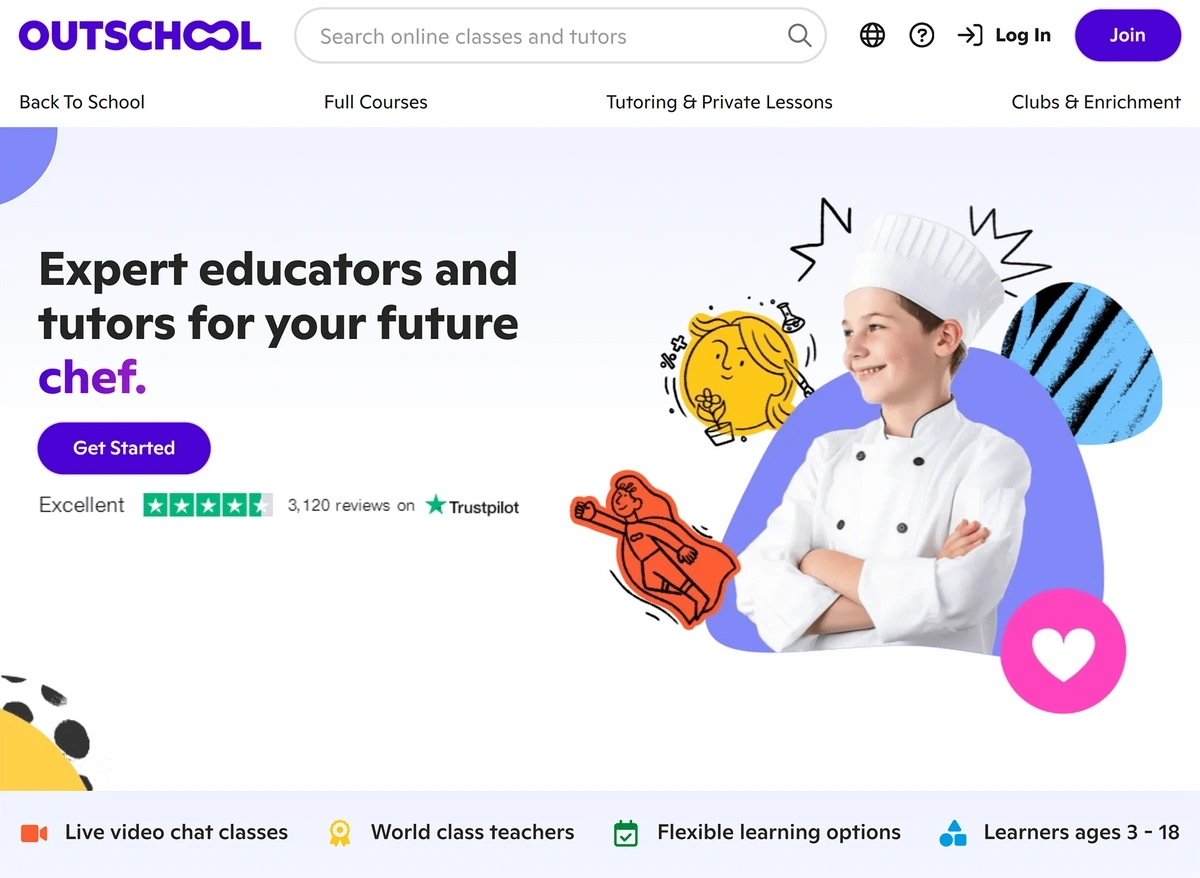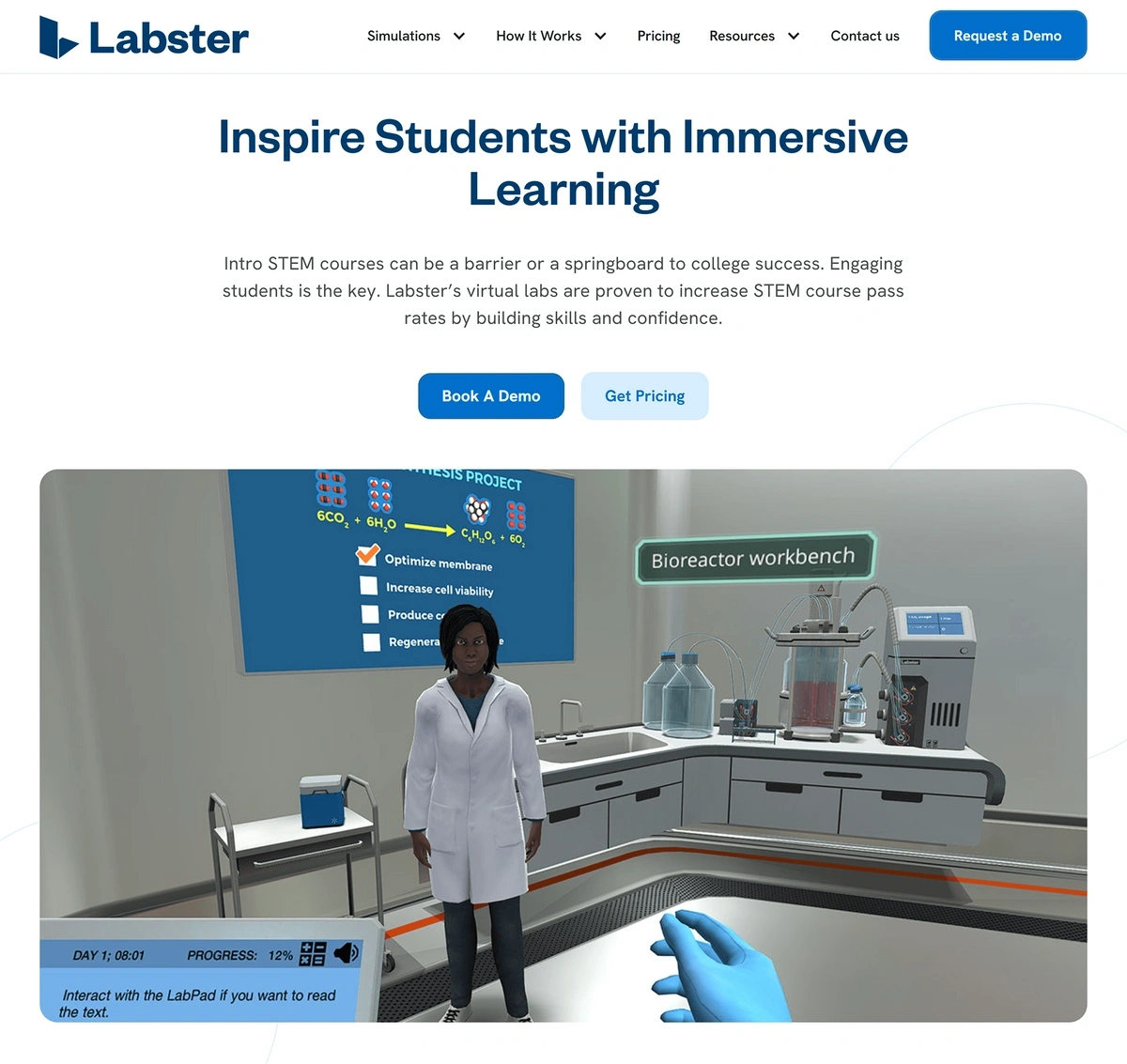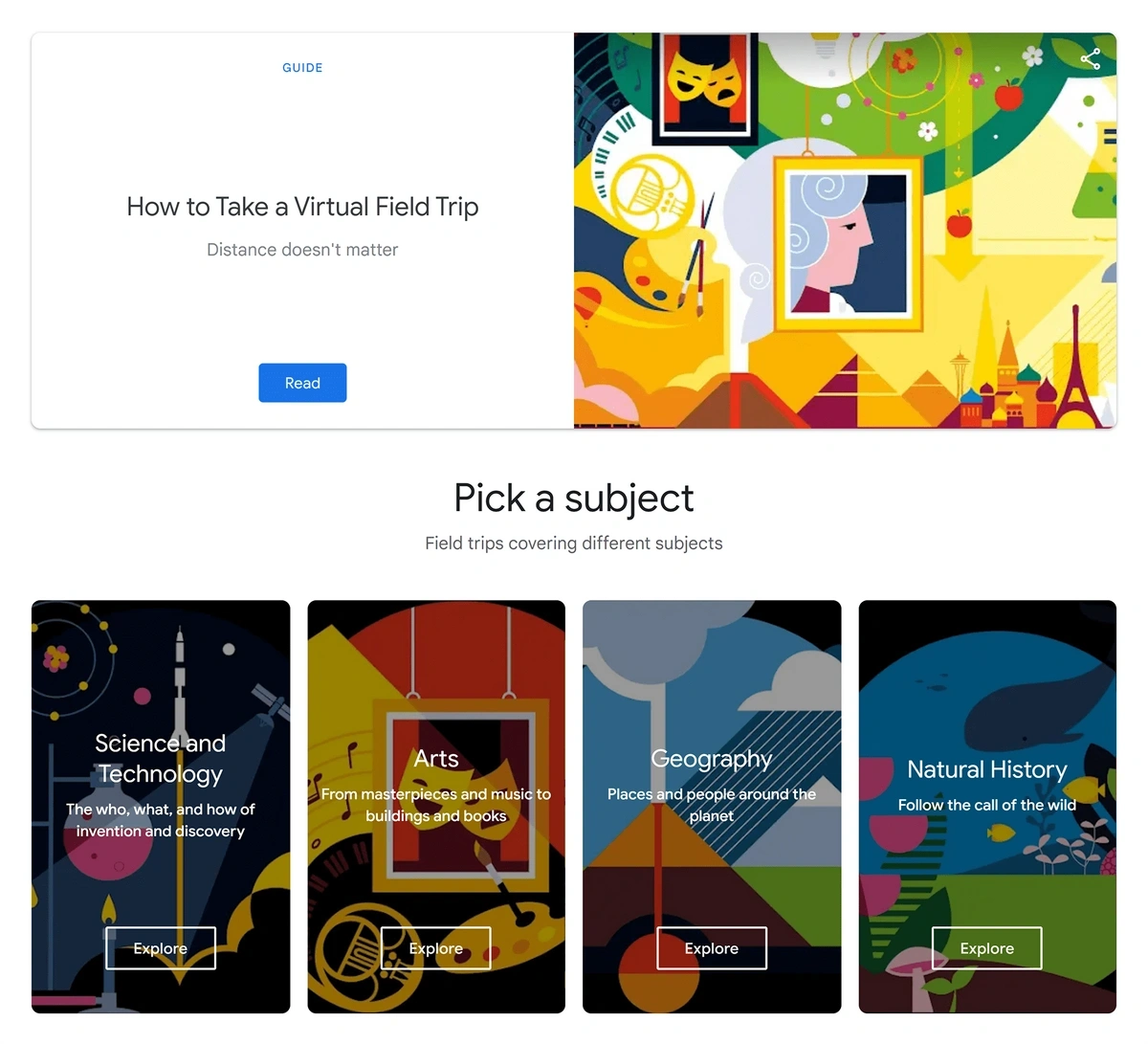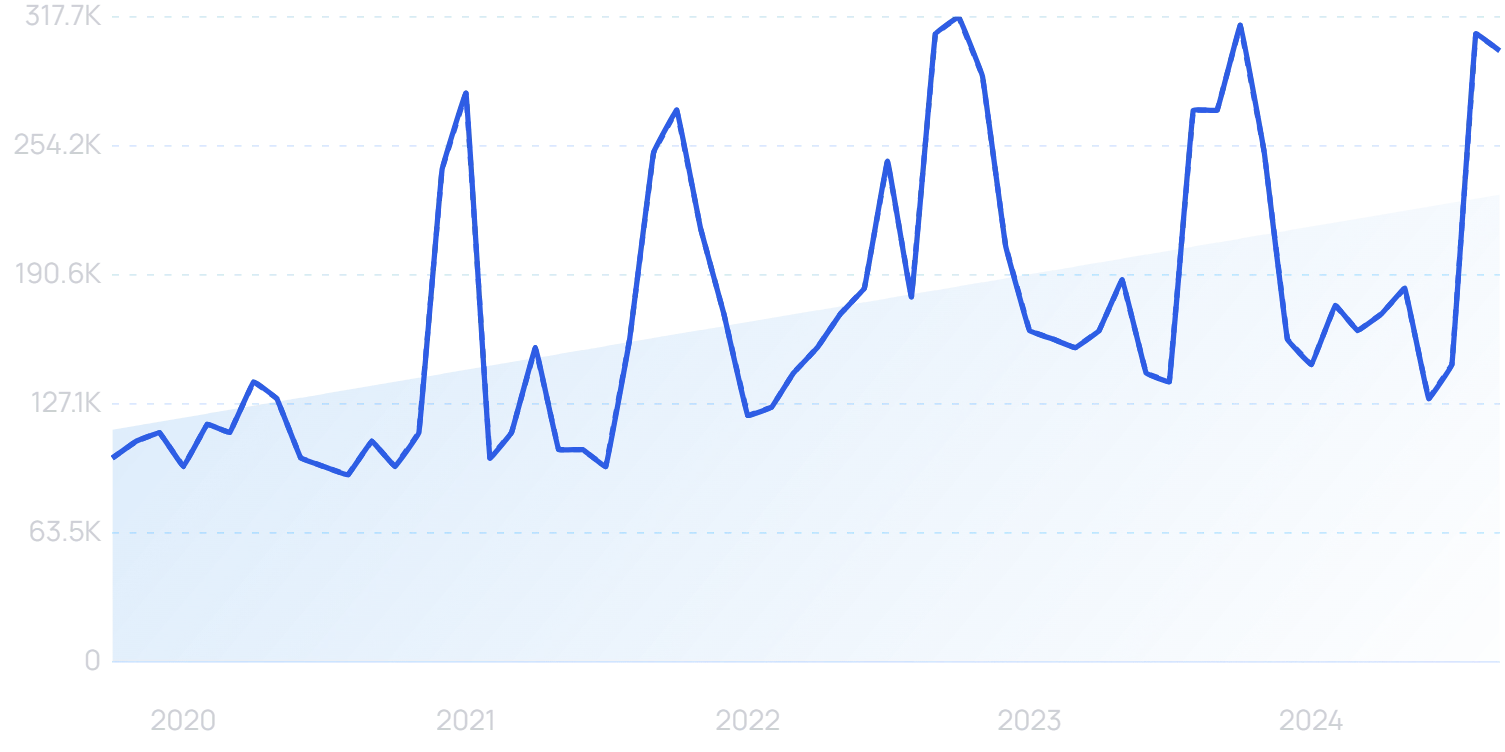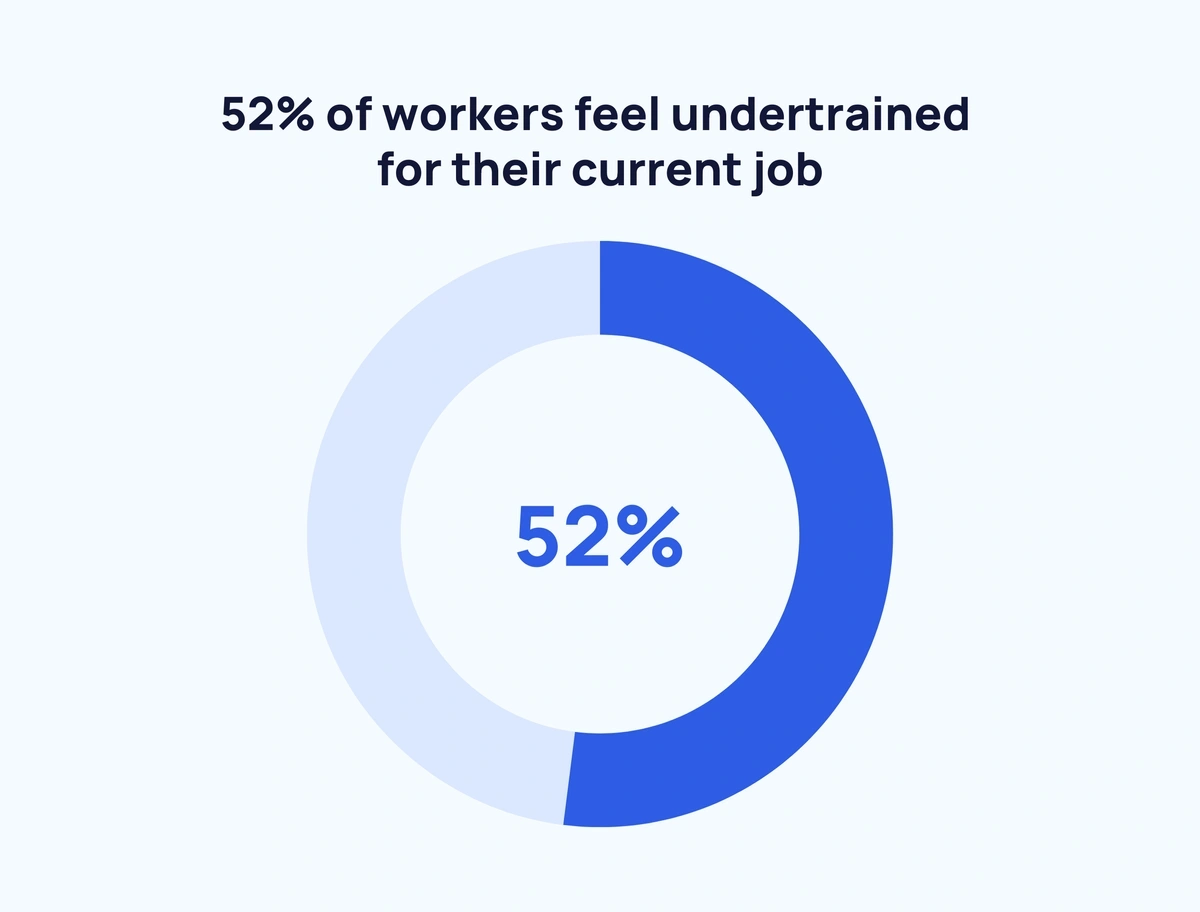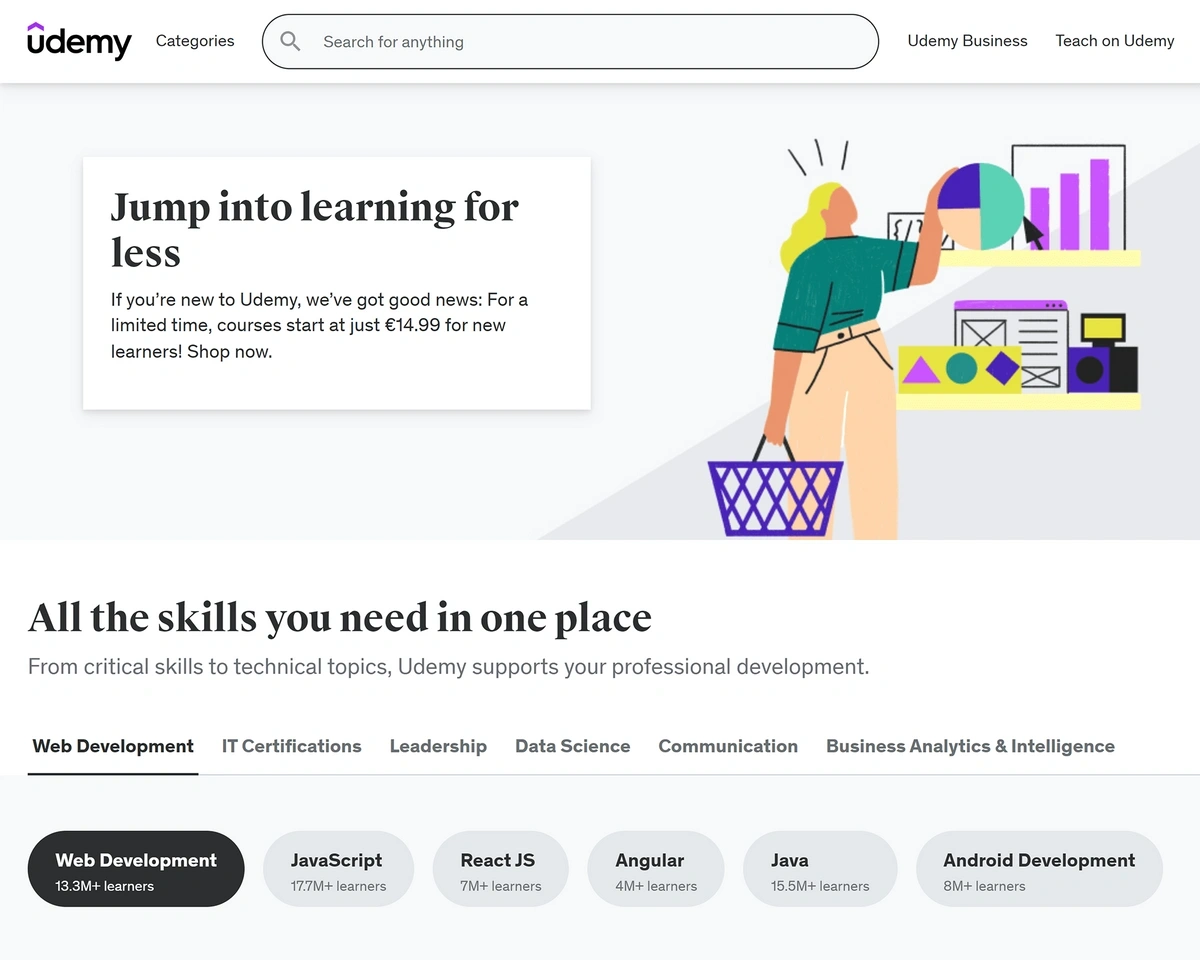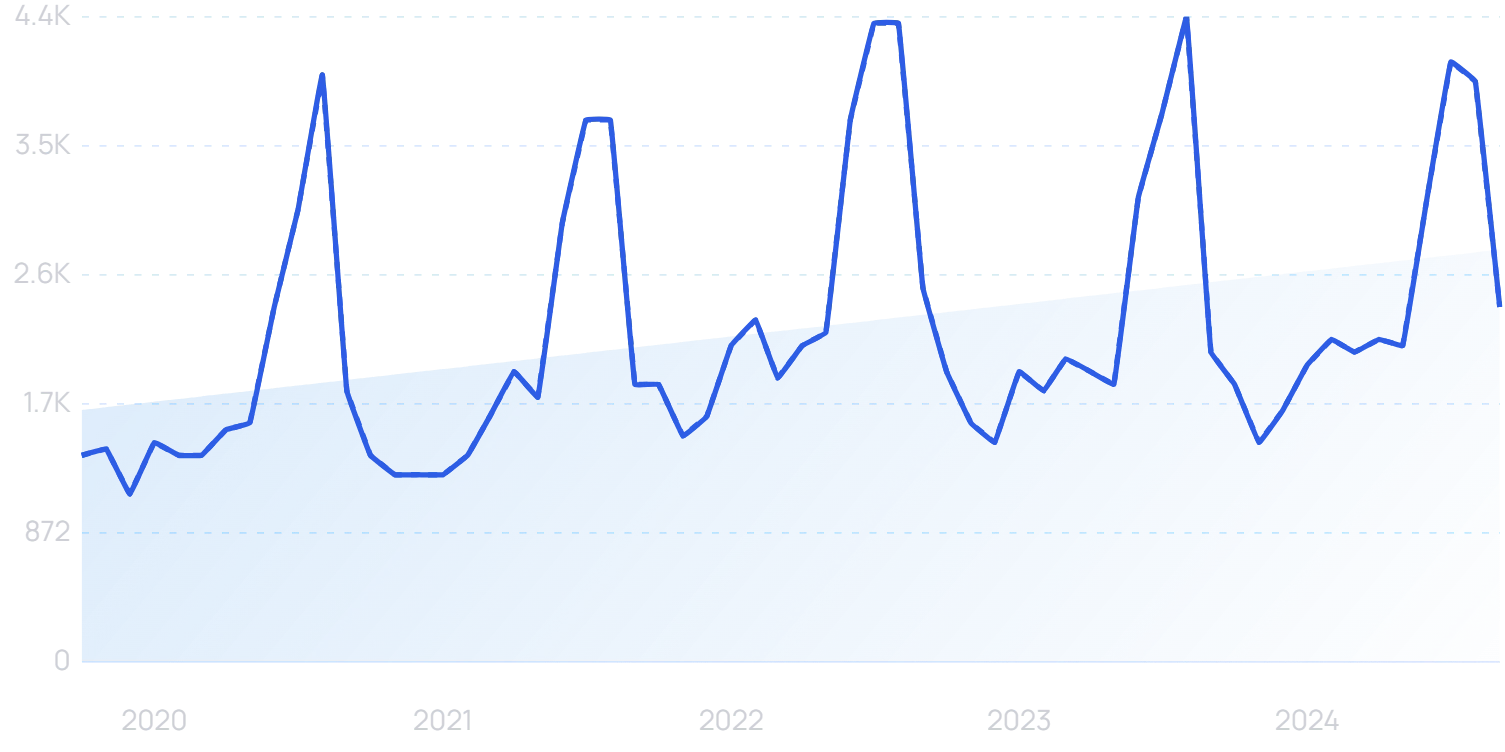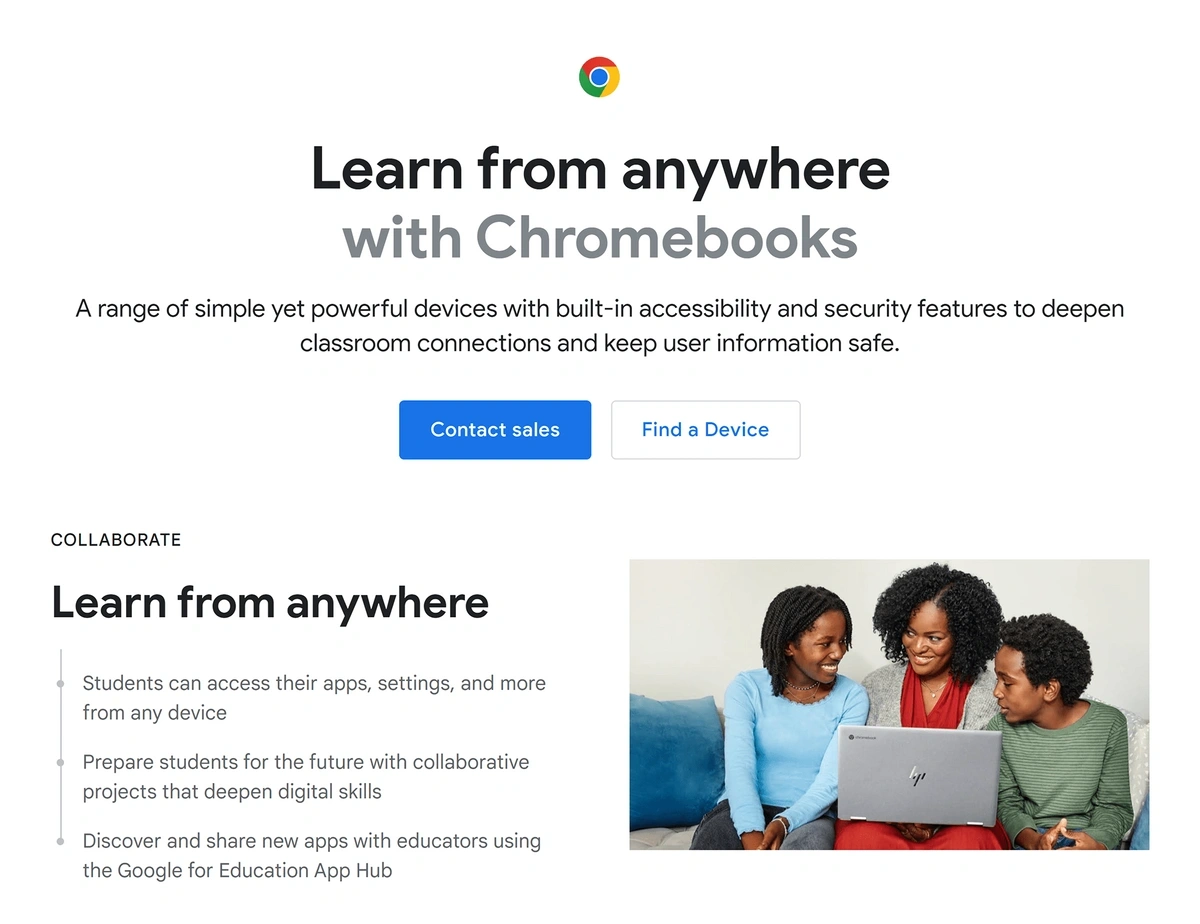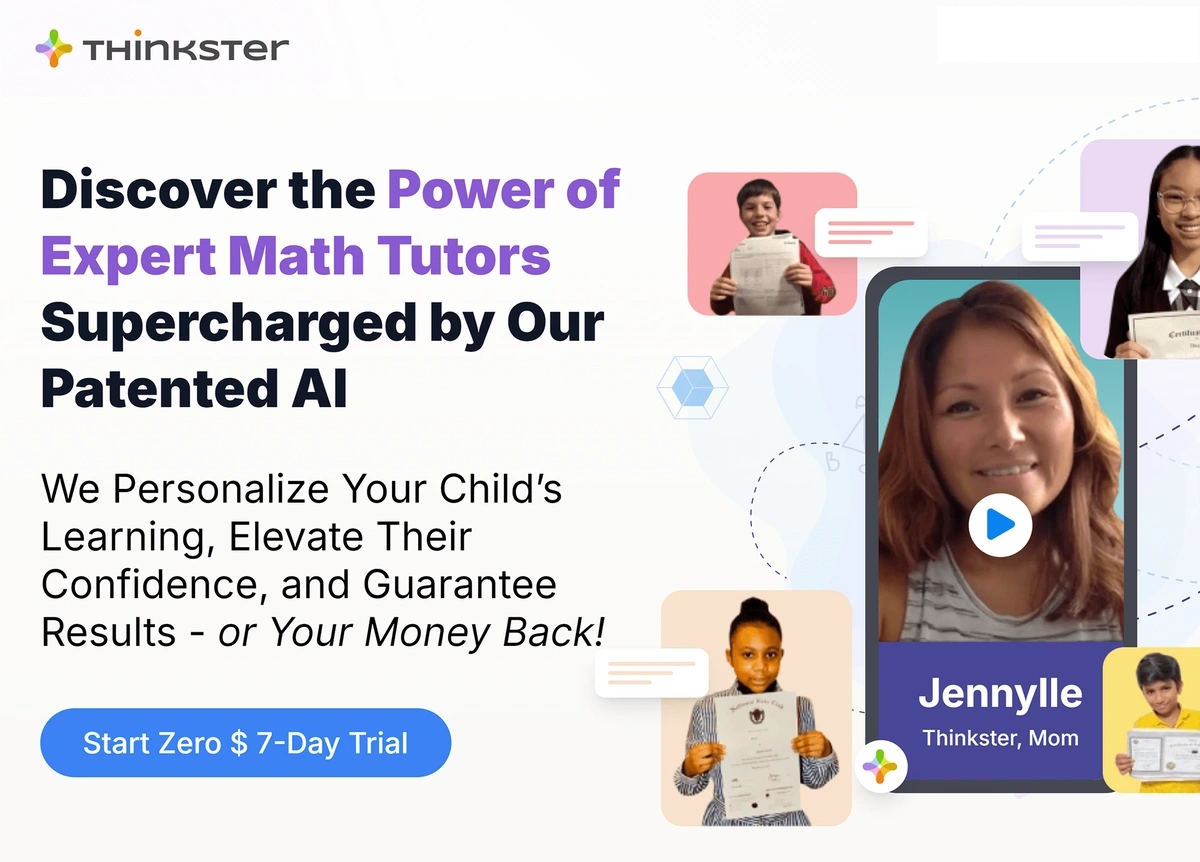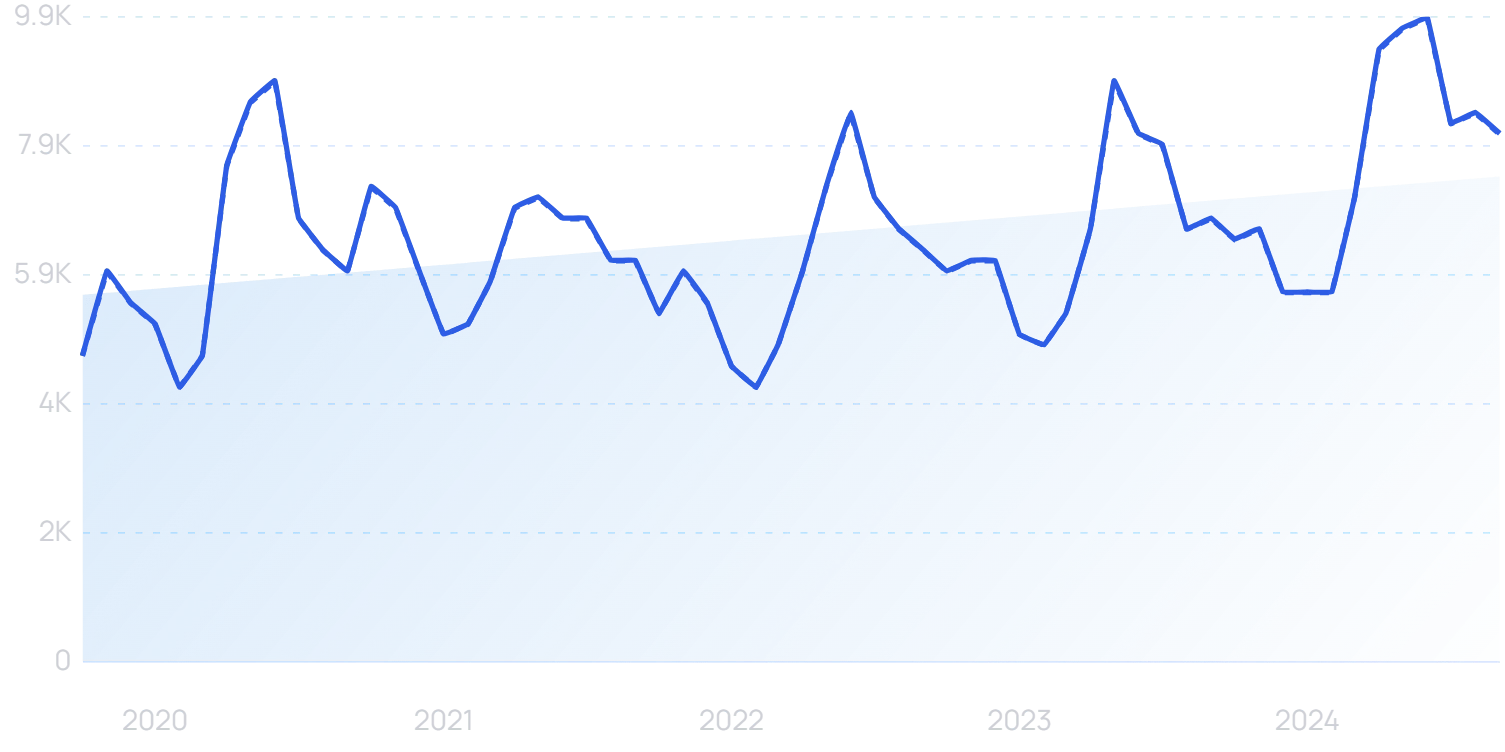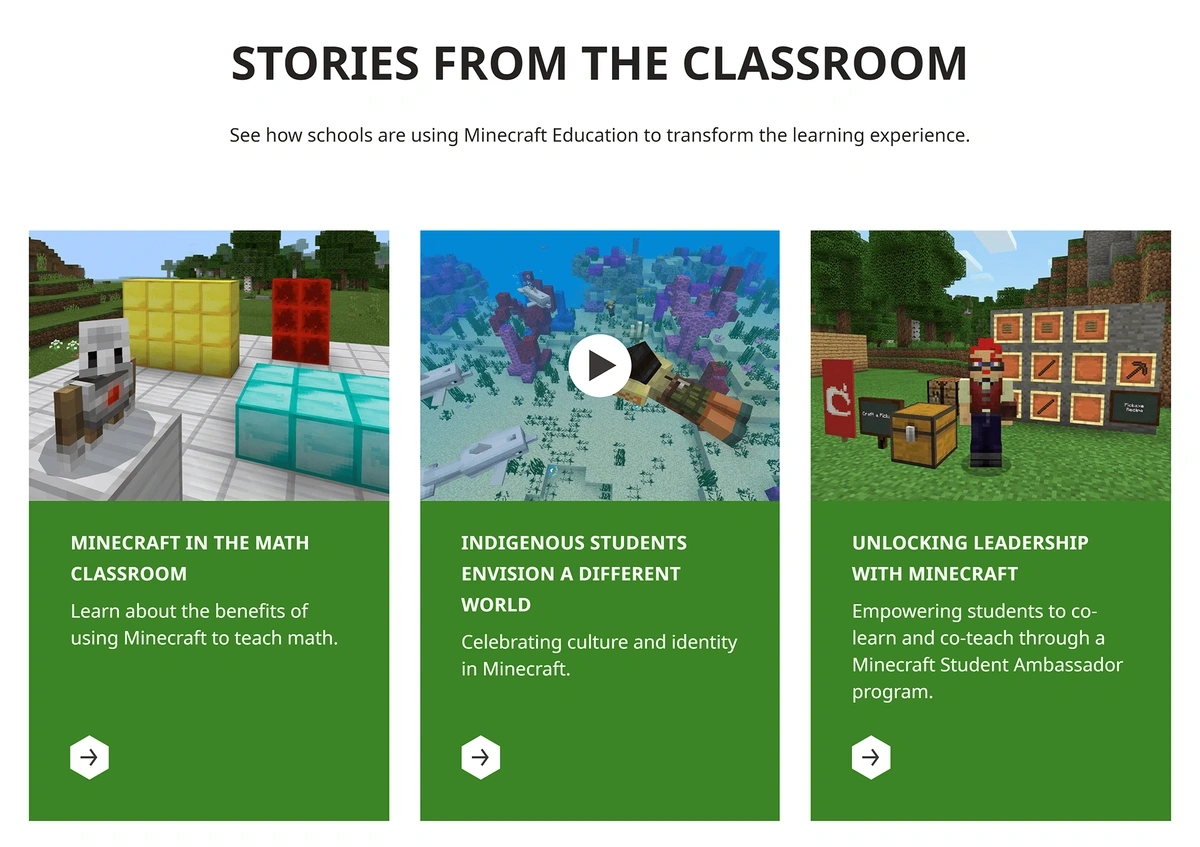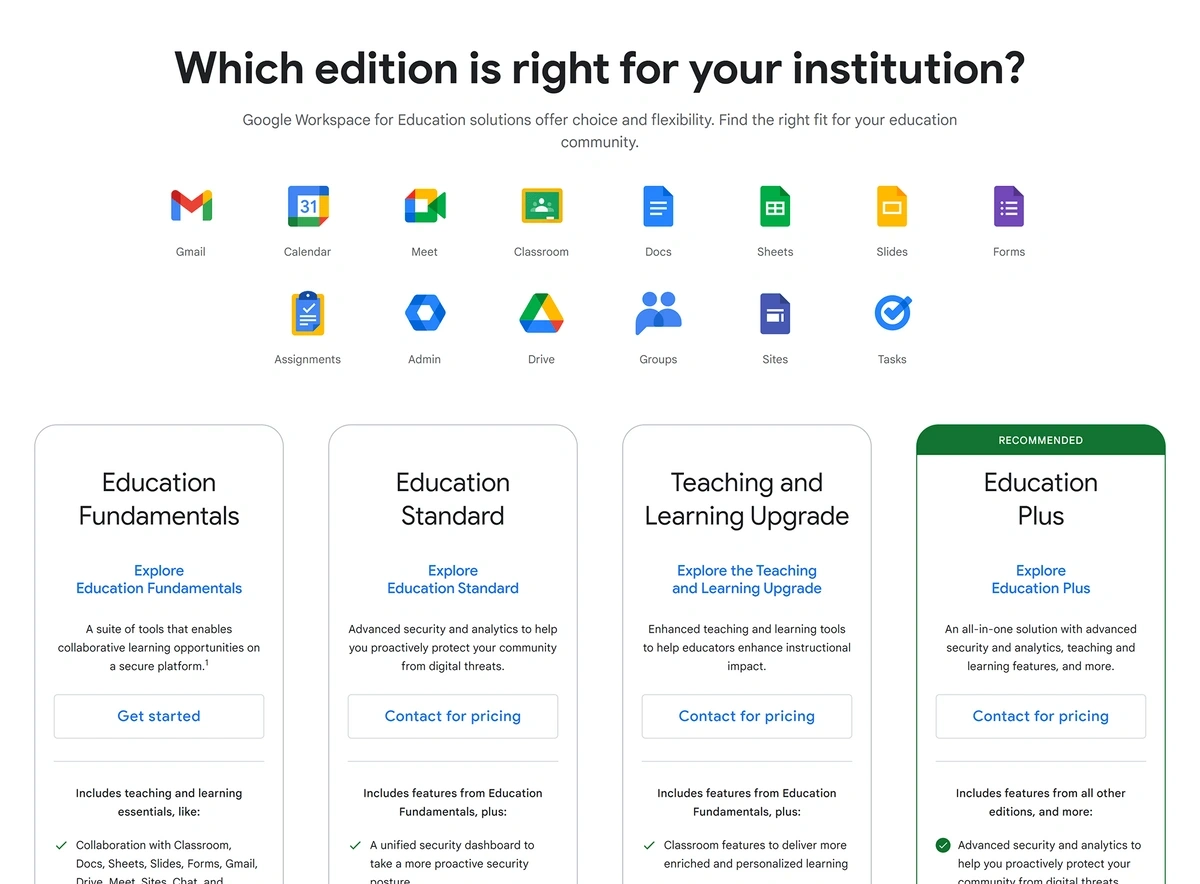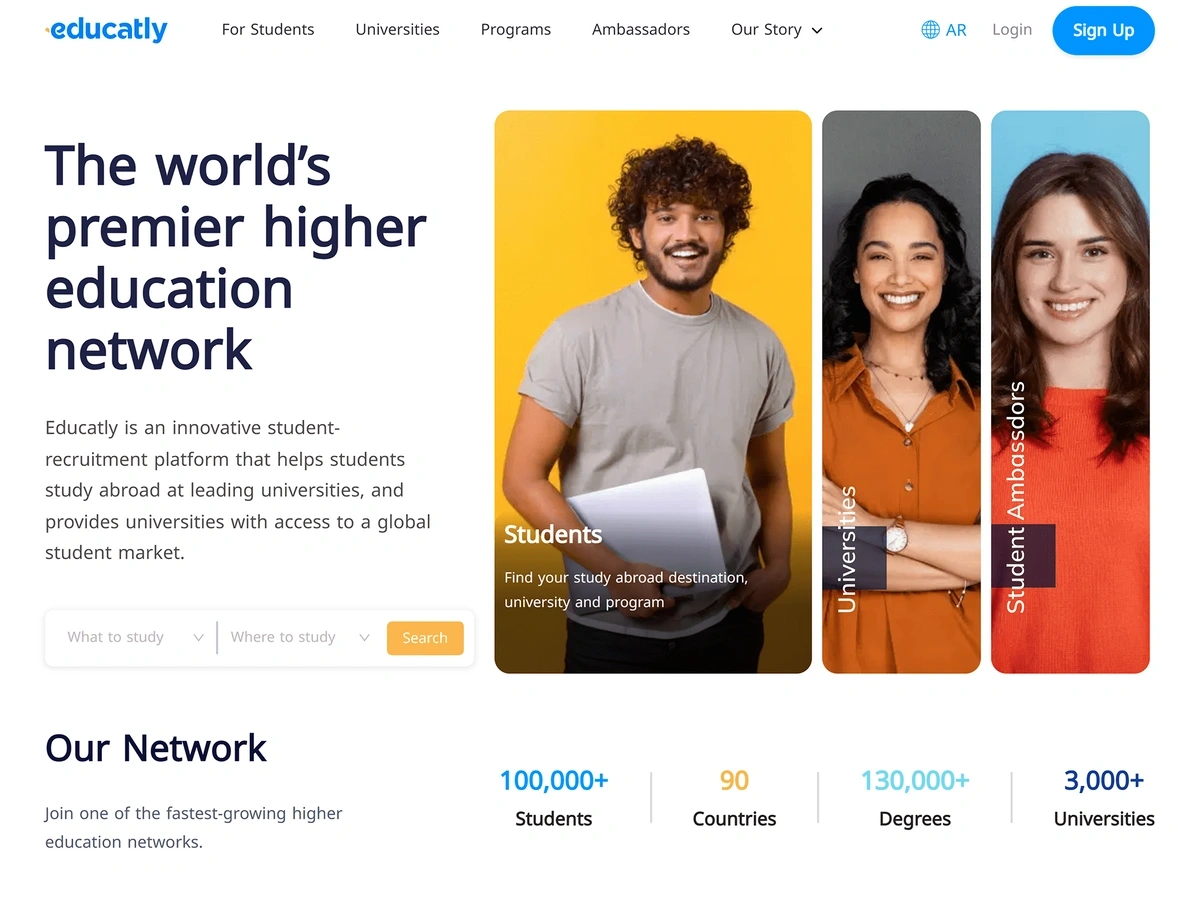
The 9 Most Interesting EdTech Trends Of 2024
You may also like:
Education technology has the opportunity to improve learning outcomes for hundreds of millions of children and adults worldwide.
But what are the biggest trends in EdTech for 2024?
And what’s coming around the corner?
Read on to find out.
1. AI Reaches All Areas Of Education
According to Forbes, 60% of US teachers have already integrated one or more AI tools into the classroom.
Meanwhile, 65% of American undergraduates believe AI will improve how students learn rather than having negative consequences.
With this broad and growing support from both pupils and educators, it’s little wonder that we are starting to see more purpose-built educational AI tools.
Squirrel AI is a Chinese company focusing on the power of AI to tailor and personalize education.
“Squirrel AI” searches are up 473% in 5 years.
Trained on data from more than 24 million students, Squirrel’s “Large Adaptive Model” is designed to identify pupils’ strengths and weaknesses and offer targeted interventions.
AI grading is also taking off.
Copyleaks offers a tool which promises to remove bias, reduce errors and boost efficiency when it comes to marking papers.
Searches for “Copyleaks” are up 789% in just 2 years.
In many ways, Copyleaks is right at the frontier of the education industry’s bid to get to grips with AI. As well as its grading tool, it also offers an “AI detector” designed to weed out cheating on assignments.
AI-enabled chatbots are becoming increasingly common in educational settings as well.
Chatbots like Ivy.ai and Mainstay are being used as higher-ed administrative assistants, helping with anything from the college admissions process to student housing and financial aid.
Ivy.ai has built over 800 chatbots for higher education institutions, facilitating 6.2 million unique conversations last year. It has a 97% customer retention rate.
2. Innovative K-12 Homeschooling Startups Spring Up
Interest in homeschooling in the US has been increasing for years.
In fact, homeschoolers currently make up an estimated 6.7% of American school-aged children.
As of 2022/23, homeschooling in the US had risen by 51% over the past six school years. That far outpaced the 7% rise in private school enrollments, while public school enrollments actually dropped by 4%.
That’s partly because the coronavirus pandemic made homeschooling an even hotter topic over the past couple of years.
Even so, a lot of homeschooling is still conducted with old-school pen and paper, using workbooks that can be expensive or outdated.
So it's no surprise that several EdTech startups are stepping in to offer new, tech-enabled homeschooling solutions.
One of these is Prisma, which offers what it calls a “connected learning network”.
Searches for “connected learning” are up 64% in 5 years.
Prisma markets itself as a virtual school. 1:1 coaches help take kids through the standard curriculum subjects, but also seek to teach skills like social awareness and responsible decision-making.
Outschool is another interesting EdTech startup in the homeschooling space.
Outschool is a fast-growing startup in the education technology space.
Outschool works by matching students with teachers for online learning in small groups, conducted live.
Students in 183 countries have accessed classes. And teachers on the platform have earned a collective $229 million in salary.
3. Tech-Enabled Immersive Learning Becomes More Accessible
Extended reality (XR) is an umbrella term for augmented reality, virtual reality, or the combination of related technology with the real environment.
The term exploded in popularity in 2022, before interest appeared to wane.
But quietly, there’s still a huge amount of development going on. OpenXR is a royalty-free open standard for developers designed to reduce the time and cost of adapting software for different XR devices.
Searches for "OpenXR" are up 1420% in 5 years.
That’s just one factor of many driving XR costs down and making it more accessible as an educational tool.
Average prices of VR headsets are coming down slightly. The current average unit cost is $421.44.
Cheaper units mean that more schools can use them as a standard part of their curriculum.
Last year, the educational AR and VR market size reached $3.8 billion. It’s forecast to rise as high as $14.2 billion by 2028.
But how can these technologies be used to teach?
One way is by enhancing the visual learning process.
While a real expense for many schools, VR can actually be used to save money on physical equipment.
For example, Danish startup Labster provides interactive VR laboratories that STEM students can run experiments with. No million-dollar lab is needed.
A Labster VR laboratory.
While Google Expeditions lets classes take virtual field trips to places like Mount Everest and the Louvre.
Google Expeditions lets classes take virtual field trips using VR and AR.
And for adults, Interplay Learning lets tradespeople learn skills like HVAC repair and solar panel installation.
“Interplay Learning” searches are up 343% in 5 years.
VR is also assisting special needs students.
Students with disabilities can use VR to see things they can't physically access. And autistic kids can rehearse scenarios they're likely to encounter in the outside world.
Another type of immersive learning is "makerspaces".
An example of a makerspace.
Unrelated to AR and VR, makerspaces are physical areas of a classroom, school, library, or community center that allow students to build things by hand.
They can be used for any creative endeavor, like creating books or art. But makerspaces are often used for tech projects.
For example, students are using CodeMonkey to learn programming.
“CodeMonkey” searches are up 200% in 5 years.
4. Workplace eLearning Continues To Grow
52% of workers feel undertrained for their current job.
Among those who felt that way after onboarding, 80% plan to leave their job soon. But for those who felt adequately trained, just 7% have plans to leave.
It’s little wonder that eLearning in the workplace continues to grow in popularity.
eLearning is extremely scalable, allowing the best educators to reach many students at the same time (or at different times, in the case of on-demand pre-recorded courses).
And at a much lower cost than traditional in-person classes.
The eLearning industry is already worth over $300 billion. That sum is forecast to exceed $500 billion by 2028.
Eduson is an online corporate training service.
“Eduson” searches are up 122% in 5 years.
It offers over 1500 courses. And it states that more than half a million employees have enjoyed training through the platform.
Udemy is a giant in the professional eLearning space. It offers online courses for people seeking to improve their skills.
Udemy's homepage.
Search volume is up 80% over the last 5 years to more than 6 million searches per month. It reported revenues of $728.9 million last year.
Other major players in the eLearning space include:
- MasterClass, a subscription service for on-demand courses taught by celebrities.
- Teachable and Thinkific, course-creation platforms for entrepreneurs.
- Lessonly, B2B training software.
- Italki, 1-on-1 language tutoring.
- Daily Burn, an app for exercise courses.
5. The Fight For Access To Education Continues
UNESCO data shows that there are 250 million children currently missing out on an education. That figure has risen by 6 million since 2021.
There has at least been progress since 2015, with the “out-of-school” population falling by 9 million.
But there's still a long way to go when it comes to accessibility.
In parts of Africa, the problem has actually gotten worse over the past 10 years. But EdTech is seeking to meet the needs of under-served communities.
Kukua, based in Nairobi and London, blends entertainment and education.
“Kukua” searches are up 69% in 5 years.
Its “Super Sema” series is the first African animated superhero franchise. Complementary STEAM videos explore the science behind the series.
Executive produced by Lupita Nyong’o, the show has over 190,000 YouTube subscribers. It has been backed by Tencent among other investors.
Even in Europe and North America, there are still 4.2 million out-of-school children.
One tool to combat this problem is eLearning. However, there are barriers.
For example, many schools have doled out Chromebooks to each student. But some of these homes lack internet access.
Google for Education markets Chromebooks specifically to schools.
In the US, 80% of households have broadband. But in rural areas, that number drops to 73%, and it falls to 68% in Black households.
Device availability is another challenge.
Mobile-first learning may be able to help with both of the above.
After all, mobile devices are cheaper than laptops. And rather than requiring wifi access, they can rely on mobile data service.
For homeschoolers and underserved communities, free educational resources are also helpful.
Open Educational Resources (OER) and Free and Open Source Software (FOSS) offer no-cost use of materials and software for educational purposes, enabling students and educators access that would not otherwise be possible.
6. Adaptive Learning Supercharged By AI
Adaptive learning is all about personalizing education to the needs of the individual.
“Adaptive learning” searches are up 81% in 5 years.
EdTech, and especially artificial intelligence, makes that easier than ever.
Thanks to AI, digital learning interfaces can adapt to students' needs in real-time, providing the lessons and exercises that are needed to fill in knowledge gaps and reinforce concepts.
Automated, intelligent tutoring systems have been on the rise for years.
In fact, the first "teaching machine" was created in 1924.
But it's only recently that processing power (both in the cloud and on local devices) has become powerful enough to employ AI for this purpose.
Unlocking near-unlimited possibilities for personalized learning.
One example is the AI-powered math tutoring service Thinkster, which promises up to a 90% improvement in math scores for K-8th graders.
The Thinkster homepage.
Adaptive learning is also present in the ROYBI Robot.
The ROYBI Robot uses machine learning to tailor its educational content to the child who's interacting with it, taking the child's learning style and emotions into account.
Searches for "ROYBI" have had ups and downs but they're up 143% over 10 years.
DuoLingo is also a vastly successful example of a business that has been utilizing adaptive learning for a long time.
More recently, it has further embraced AI, relying on the technology to actually devise some lessons and complete translation tasks.
7. Gamification Goes Nowhere
Gamification in education is nothing new.
For ages, teachers have been offering students prizes for reading books, achieving good grades, or otherwise being a good pupil.
But in the digital era, game mechanics can be used in even more ways.
In fact, many educational tools are simply games.
Minecraft is probably the most common example.
This "sandbox" style game has been used to create stage performances, write stories, and even teach students about DNA.
Minecraft can be used to play. And to teach.
And with over 200 million monthly players, gaming platform Roblox is now even bigger than Minecraft. It's being used around the world to teach programming and game design.
Interest in “Roblox” has risen by 87% over the past 5 years.
Game mechanics are being added to non-games as well.
Socrative offers a "space race" feature that turns quizzes into a competitive game.
GooseChase allows teachers to create interactive experiences inspired by scavenger hunts.
Knowre brings gaming mechanics (and adaptive learning) to math lessons.
And ClassDojo can add points-based gamification to almost any subject.
“ClassDojo” searches are up 153% in 5 years.
Free for schools, it has been used by over 50 million students and parents.
8. Google Everything
Google has planted roots in the education system.
Thanks to their low cost and ease of use (and maintenance), Chromebooks have become the standard student-learning device.
And there's no more natural pair to Chromebooks than Google Workspace for Education.
This suite of tools includes favorites like Google Docs, Sheets, Gmail, and Forms — each of which can be used by faculty or students. (And a free version is available.)
Google Workspace for Education.
Also included in Google Workspace for Education are Google Classroom and Google Assignments.
Searches for "Google Assignments" are still well below their pandemic peak, but interest has risen 50% in the last 2 years.
Google Classroom offers a digital space for students and teachers to interact, assign and turn in homework, and more.
While Google Assignments is a tool to help teachers create and grade coursework more quickly.
Finally, Google also offers its Google Cloud Platform to schools and universities, offering cloud storage and computing power for research and other uses.
9. Accelerating Investments In EdTech
In the first half of 2024 alone, 402 EdTech deals attracted $1.5 billion of funding.
Unsurprisingly, funding tracked with the emerging trends in the EdTech space.
AI was a common theme among many of the biggest deals.
For example, Merlyn Mind is an AI voice assistant built specifically for the classroom.
Searches for “Merlyn Mind” are still spiky, but they are trending upward.
The AI assistant has won the Cool Tech award from EdTech Digest.
And BrightEye Venture Capital reports that Merlyn Mind secured a $79 million Series B round this year.
EdTech designed to improve access to education also received funding.
In July, Educatly completed a $2.5 million seed funding round.
The Egypt-based startup is a “student recruitment platform” operating primarily in the Middle East and Africa. It aims to democratize higher education opportunities.
The Educatly home page.
Meanwhile, Europe is becoming a leader in EdTech. It accounted for 32% of all deals last year, compared to just 21% in 2019.
It will be interesting to see which well-funded startups end up shaking up the education sector.
Wrapping Up
There you have it: nine of the most interesting education technology trends of 2024.
From AI-powered learning to eLearning and more, for PreK-12 and adult learning. Many of these trends are poised to disrupt the field of education as we know it.
Hopefully, it's for the better.
Stop Guessing, Start Growing 🚀
Use real-time topic data to create content that resonates and brings results.
Exploding Topics is owned by Semrush. Our mission is to provide accurate data and expert insights on emerging trends. Unless otherwise noted, this page’s content was written by either an employee or a paid contractor of Semrush Inc.
Share
Newsletter Signup
By clicking “Subscribe” you agree to Semrush Privacy Policy and consent to Semrush using your contact data for newsletter purposes
Written By


James is a Journalist at Exploding Topics. After graduating from the University of Oxford with a degree in Law, he completed a... Read more

